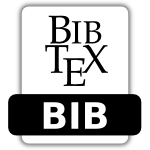Additivity of nonsimultaneous masking for short Gaussian-shaped sinusoids


Authors: Laback B., Balazs P., Necciari T., Savel S., Ystad S., Meunier S., Kronland-Martinet R.
Publication Date: February 2011
Journal: The Journal of the Acoustical Society of America (JASA) (vol. 129(2), pp. 888-897, 2011 )
Tags: Time-Frequency Masking
Abstract
The additivity of nonsimultaneous masking was studied using Gaussian-shaped tone pulses (referred to as Gaussians) as masker and target stimuli. Combinations of up to four temporally separated Gaussian maskers with an equivalent rectangular bandwidth of 600 Hz and an equivalent rectangular duration of 1.7 ms were tested. Each masker was level-adjusted to produce approximately 8 dB of masking. Excess masking (exceeding linear additivity) was generally stronger than reported in the literature for longer maskers and comparable target levels. A model incorporating a compressive input/output function, followed by a linear summation stage, underestimated excess masking when using an input/output function derived from literature data for longer maskers and comparable target levels. The data could be predicted with a more compressive input/output function. Stronger compression may be explained by assuming that the Gaussian stimuli were too short to evoke the medial olivocochlear reflex (MOCR), whereas for longer maskers tested previously the MOCR caused reduced compression. Overall, the interpretation of the data suggests strong basilar membrane compression for very short stimuli.
